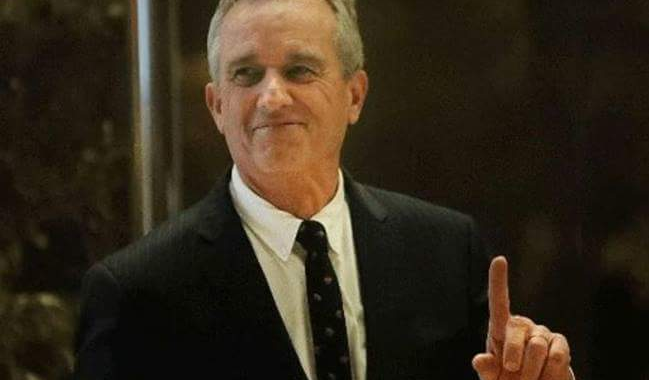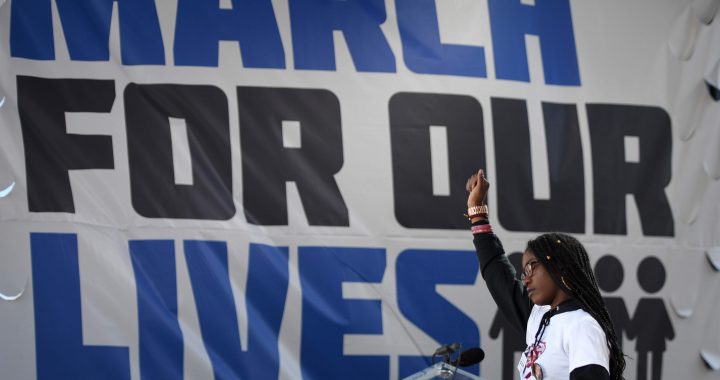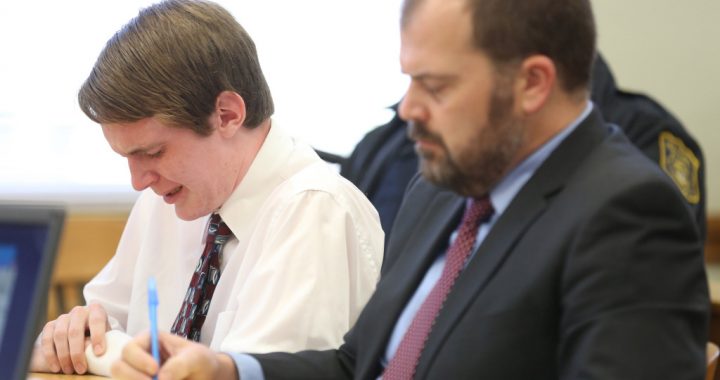NOTE FROM Ann Blake-Tracy (www.drugawareness.org): How many soldiers do we need to lose to suicide before we wake up to the fact that the FDA has warned about increased suicide in those in this age group who take antidepressants??!!!!!!!!!!!!!!!!!!
Paragraph 38 reads: “Even if a veteran seeks out that help, it might not be enough. It wasn’t in Blaylock’s case — or, for that matter, in any of the cases of the four members of the 1451st who came home and committed suicide. Each of the four made at least some effort to get help from the VA, and each was prescribed an antidepressant.”
http://www.indystar.com/apps/pbcs.dll/article?AID=/20090902/NEWS/909020387
Day 4: ‘Where’s the line between people’s rights and enforcing help?’
Military, VA confront host of thorny issues in trying to prevent veterans’ suicides
By Konrad Marshall
Posted: September 2, 2009Read Comments(6)RecommendE-mail Print ShareA A If there is something that might help returning soldiers better adjust to civilian life — something that might help tame the inner demons of war — it is mandatory, intensive and long-term counseling.
It wasn’t required when Sgt. Jacob Blaylock and three other soldiers in the 1451st Transportation Company returned home nearly 2 1/2 years ago and later ended their own lives. Although some are receiving more counseling now, that follow-up work still is not required and, for various reasons, might never be.
There are numerous obstacles, but these are foremost: It’s difficult to determine how likely someone is to commit suicide — an issue made more difficult because soldiers often don’t seek help or acknowledge and discuss problems. Also, requiring extensive screenings and follow-ups could infringe on the rights of veterans who are now civilians.
The military and the Department of Veterans Affairs are left to perform something akin to mental health triage — a focus on the most obvious and severe cases. For the rest, it’s a quick assessment and an along-you-go, hope-for-the-best.
That works fine for many. But the VA and military have no effective way to monitor and counsel those whose anguish is more subtle — or purposely masked — whose depression deepens over time amid the nightmares of war and troubles at work or at home.
The military puts most of its effort into its demobilization process, required of all returning soldiers. The process is designed to prepare soldiers for a return to civilian life and to assess their physical and mental health.
When Blaylock and his comrades in the 1451st demobilized at Camp Atterbury, it was a three- to five-day process. Today, it’s a five- to seven-day process in which soldiers undergo mandatory reintegration briefings and one-on-one sessions with mental health counselors.
But it is also during demobilization that two competing interests emerge. Mental health workers want to make sure soldiers are OK. Soldiers want to go home.
“They ask you, ‘Do you have any issues?’ You say, ‘No,’ because a soldier wants to get home,” said Staff Sgt. Robert Mullis, an active-duty commander with the 1451st in Boone, N.C. “All these things they ask you about, the answer is ‘No,’ because you want to get home. Then you get home and you have medical issues or employment issues, or you figure out maybe you should have had counseling.”
Lt. Col. Timothy Holtke, director of Personnel and Civilian Affairs at Camp Atterbury, said the Army understands that and is getting better about probing each soldier’s mind-set.
“We want to dig a little deeper than ‘Hey, soldier, how are you doing?’ ” Holtke said. “If they’re having an issue, we want to pull it out of them.”
That said, Holtke and others acknowledged that soldiers will try to placate clinicians in order to finish faster.
“We know soldiers do that,” said Dr. Marsha Rockey, the only psychologist with the Department of Behavioral Health at Camp Atterbury, where more than 7,000 soldiers are processed each year. “Do we catch 100 percent of them? I’m sure we don’t. But we tell them: ‘Our goal is not to keep you; it’s to keep you safe.’ ”
Staff Sgt. Brian Laguardia is a national advocate for returning veterans and one of five former soldiers who did a national public service announcement with Tom Hanks for the group Welcome Back Vets. He also was a member of the 1451st and a friend of Blaylock’s.
Recalling the 1451st’s demobilization at Camp Atterbury, Laguardia said, “They did as little as they could to hold us back, to keep us from going home. Really quickly, they had us out of there. There’s a real need to make the transfer slower, more than a couple of weeks even.”
But there is a practical concern: Bringing troops home earlier to give them more time to demobilize would require calling up other troops more quickly.
Holtke said that already is a problem.
“Nobody anticipated that these contingency operations would go on as long as they have,” he said. “You have reserve soldiers going on third and fourth tours, which was just inconceivable 20 years ago.”
Mullis said another issue is the timing of demobilization. He advocates going home for two weeks, then being required to report to the demobilization site, “so you know what issues you’re facing.”
Dr. Cheryl Sweeney, who works every day with veterans of Operation Iraqi Freedom and Operation Enduring Freedom, understands this all too clearly.
“We live in a society that wants to be about peace and friendliness and understanding, and combat veterans — especially fresh combat veterans — are about protection and defensiveness and sometimes a lot of anger and hostility,” she said. “It’s hard to mesh those two realities.”
Rick Blaylock, Jacob’s father, and many others said they think there should be mandatory check-ins and behavioral screenings long after deployment, whether quarterly or every six months, to detect and treat symptoms that appear over time.
As it is, once they leave the military, the onus is on individual veterans to seek help.
And that’s not always the way of a soldier.
“When you come back from overseas,” Mullis said, “you’re a different creature than when you left. Things change in a year. It’s hard. Life’s hard. People see stuff. They experience stuff that changes them. There’s personal guilt.
“I think some don’t seek the help they need soon enough. Pride gets in the way. All your military life you’re told you’re strong enough.”
At Camp Atterbury, there are signs that try to cut through that culture: “Never Leave a Fallen Comrade: Buddies Can Prevent Suicide” and “Not All Wounds Are Visible.”
Laguardia supports the VA but thinks the Army should make it mandatory for soldiers to register there.
“Check in on them. That’s why you’re in charge,” he said. “Just like when you’re a sergeant and you come off mission and you say, ‘I know you’re exhausted right now, but you have to clean your weapons.’ I think there’s such a stigma on going to a mental health screening that they have to make it mandatory.”
But can they?
“In some ways, we do wish that we were able to do that,” said Jan Kemp, the national suicide prevention coordinator for the Department of Veterans Affairs. “In other ways, veterans have truly left the military, and their control over their own lives is important. I think we walk a fine line there.”
Sweeney, who is the Seamless Transition psychiatrist with the Roudebush Veterans Affairs Medical Center in Indianapolis, agrees.
“So where’s the line between people’s rights and enforcing help?” she said. “I wish there were no pain in the world. But philosophically — not to mention practically — you’re kind of stuck.”
Kemp noted that a number of systems are in place to help veterans through their problems, including the National Suicide Prevention Lifeline, which has taken more than 150,000 calls in two years; the suicide prevention coordinators put in place at all VA offices; and the Seamless Transition staff designed to deal with veterans of the wars in Iraq and Afghanistan.
The Army has its own programs, such as the Yellow Ribbon campaign and Military OneSource — tools for checking up on soldiers and dealing with the issues they face. But all the programs are voluntary.
“That’s probably my biggest concern,” Rockey said. “I wish there was some system set up, because they don’t know what issues they’ll have in 30 days, 60 days, 90 days or 180 days.
“We try to tell them where to go, what their resources are, but when they’re coming through here (during demobilization), you see it — ‘La la la.’ ‘What do I have to do?’ ‘What’s my next checked box?’ — so how much they retain is a big question mark.”
Even if a veteran seeks out that help, it might not be enough. It wasn’t in Blaylock’s case — or, for that matter, in any of the cases of the four members of the 1451st who came home and committed suicide. Each of the four made at least some effort to get help from the VA, and each was prescribed an antidepressant.
Blaylock’s medical records indicate he was suffering post-traumatic stress disorder and possible traumatic brain injury, and that he was talking and thinking about suicide. His father thinks that should have been enough to “keep him off the streets.”
Sweeney acknowledged that circumstances often suggest a suicide could have been prevented somehow.
“But how?” she asked. “The bottom line is that a veteran can only be forced into 72-hour supervised care if they are imminently suicidal. Not like, ‘Some day we think this could turn bad.’ More like, ‘Today. If we let you go home we’re afraid you’ll kill yourself today.’ ”
Although it may be difficult to know just when a soldier such as Blaylock becomes imminently suicidal, it was clear in his case that he had issues.
The psychologists at the VA knew. His friends, fiancee and members of his family knew. His fellow soldiers knew. He knew.
And it appears the Army knew, almost from the beginning of his service.
Blaylock entered the Army at age 17 and was discharged two years later after suffering from depression and being diagnosed with a personality disorder that was not discussed further in his medical records.
He was recalled for active duty four years later. But during training, more than one fellow soldier told Army mental health staff they had concerns about Blaylock’s state of mind.
Blaylock was deemed fit to serve, however, and by all accounts served his country well.
Ultimately, the more difficult question may be whether Blaylock was fit to return home. The timing of the explosion that killed his two friends — and left him riddled with guilt — couldn’t have been much worse.
In Iraq, he had developed close relationships with people he thought understood what he had been through. He was especially close to those, like himself, who were members of the Individual Ready Reserve — soldiers who were brought back to fulfill military commitments.
Leaving Iraq meant leaving the war, but it also ripped a fragile, sensitive young man from the people he trusted most — his IRR brothers — at a time when he needed them the most.
Sgt. Riley Palmertree, 29, served in the 1451st and was a friend of Blaylock’s. He is building a library of material for a documentary about the suicides. He has heard people ask whether it would have been prudent to keep the unit in Iraq for a month or two after the deaths of Sgts. Brandon Wallace and Joshua Schmit so close to the end of their deployment.
He even answers the question as part of a treatment he wants to submit to magazines:
“We could know the future no more than we could have stayed together forever in Neverland. I know for some it must be hard to understand, how such a hellish place could be likened to that, but it wasn’t the place; it was the IRR. We were the place. I do know that with us, Jackie was safe. Of that I am certain.”
Palmertree likened the situation to “boys at camp.”
“I think Jackie craved that as much as I did, as much as the rest of us did,” Palmertree told The Star. “He loved it, every moment of it, every time we wrestled with him. He was like a little dog nipping at our heels.”
Sweeney said there is no simple solution to the problem — that keeping a unit together for the sake of one at-risk soldier, even for a few weeks, could put other soldiers at risk.
“Who’s to say the best thing for a given soldier might not be to go home?” Sweeney said. “That’s the challenge that command faces.
“You’ve got to keep in mind you’re dealing with millions of people, and automatically that means you’re dealing with thousands of answers. What’s right for one person is going to be the worst possible thing for someone else.”




